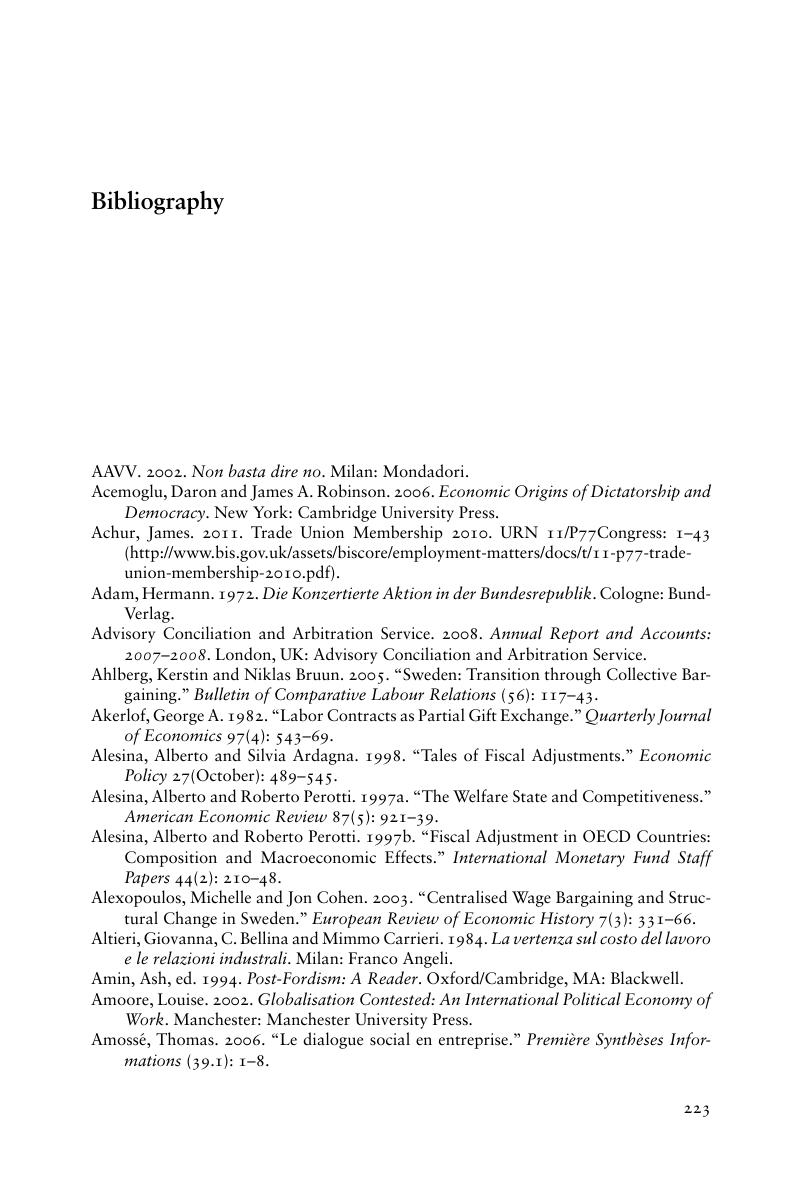Book contents
- Trajectories of Neoliberal Transformation
- Trajectories of Neoliberal Transformation
- Copyright page
- Dedication
- Dedication
- Contents
- 1 Introduction
- 2 Arguing for Neoliberal Convergence
- 3 Quantitative Analysis of Industrial Relations Change
- 4 Constructing a Liberal Market Economy
- 5 State-Led Liberalization and the Transformation of Worker Representation in France
- 6 Softening Institutions
- 7 “Well Burrowed, Old Mole!”
- 8 The Conversion of Corporatism
- 9 Actors, Institutions and Pathways
- 10 From Industrial Relations Liberalization to the Instability of Capitalist Growth
- Bibliography
- Index
- References
Bibliography
Published online by Cambridge University Press: 12 September 2017
- Trajectories of Neoliberal Transformation
- Trajectories of Neoliberal Transformation
- Copyright page
- Dedication
- Dedication
- Contents
- 1 Introduction
- 2 Arguing for Neoliberal Convergence
- 3 Quantitative Analysis of Industrial Relations Change
- 4 Constructing a Liberal Market Economy
- 5 State-Led Liberalization and the Transformation of Worker Representation in France
- 6 Softening Institutions
- 7 “Well Burrowed, Old Mole!”
- 8 The Conversion of Corporatism
- 9 Actors, Institutions and Pathways
- 10 From Industrial Relations Liberalization to the Instability of Capitalist Growth
- Bibliography
- Index
- References
Summary

- Type
- Chapter
- Information
- Trajectories of Neoliberal TransformationEuropean Industrial Relations Since the 1970s, pp. 223 - 252Publisher: Cambridge University PressPrint publication year: 2017



